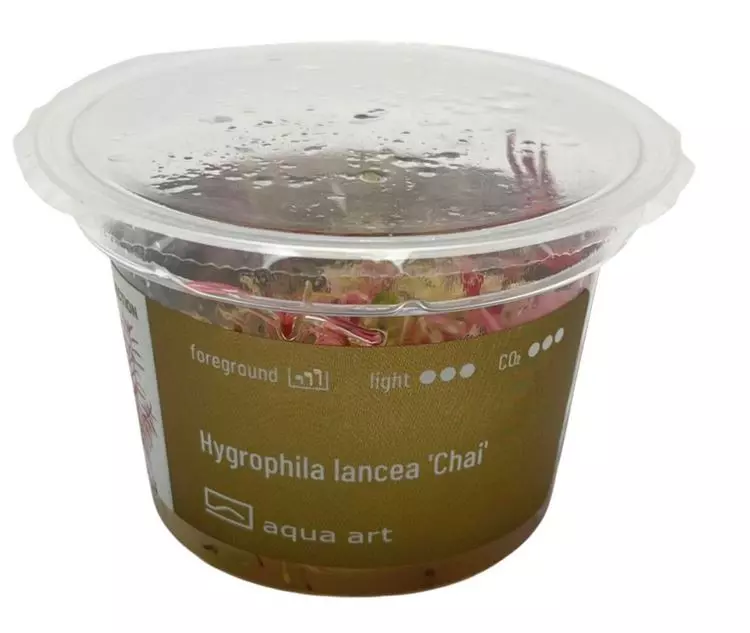







Nesea sp. Gold
Nesea sp. "Gold" is a stem plant, with intense yellow to orange colors that is rare in aquarium plants.
Nesea sp. Gold
- Growing difficulty: : medium, demanding
- Light requirement: medium
- CO₂ requirement: medium
- Adult plant height: 40-50 cm
- Growth: medium
- Temperature: 22-28°C
- Placement in aquarium: third level
- Origin: Africa
- Cup diameter 6 cm
With sufficient light, it takes on colors ranging from bright yellow to intense orange. Nesea sp. Gold is not very demanding in terms of growing conditions. The yellow coloration of the leaves can be achieved even with moderately intense light. The stronger the lighting, the more the color shifts towards an orange tone. The plant can reach a height of up to 50 cm and is thus intended for the third level. However, it has a fairly moderate growth, so it does not require frequent pruning and with good care can be used as a foreground plant. Nesea sp. Gold needs CO₂ in gaseous form, but the carbon dioxide requirement is not too high and medium due to the growth rate is not too fast. It requires nutrient-rich water for optimal appearance. However, attention should be paid to potassium levels, as excess can cause deformation of the growth cones.
It grows best at temperatures between 22 and 28 degrees Celsius. Since it prefers high temperatures, it is suitable for tanks with a population of extremely heat-loving fish. The undoubted advantage of this plant is the combination of a very unusual leaf color and low requirements. Nesea sp. Gold provides a good contrast with both green and red foliage plants, and the effect is relatively easy to achieve. It does not require a large amount of CO2. It likes soft and slightly acidic water, but can grow in other parameters as well. It needs good light, a nutrient-rich substrate, CO2 and adequate fertilization to achieve intense coloration. If you want to keep Nesea sp. Gold as a background plant, you should prune it regularly. This will not only keep it at the right height, but will also make it thicker and give it a striking appearance. After pruning, the plant will rejuvenate and the cut tops can be planted in the ground.
1 of 1 reviews
5 out of 5 stars
Login
28 September 2024 20:54
Top Qualität!
Top Qualität. Ich habe selten so gute InVitro Pflänzchen kaufen können bei anderen Anbietern. Werde sicher wieder hier bei Zoo Rocco einkaufen. Danke.
Customers also bought
Similar products
Customers also viewed








.jpg)













